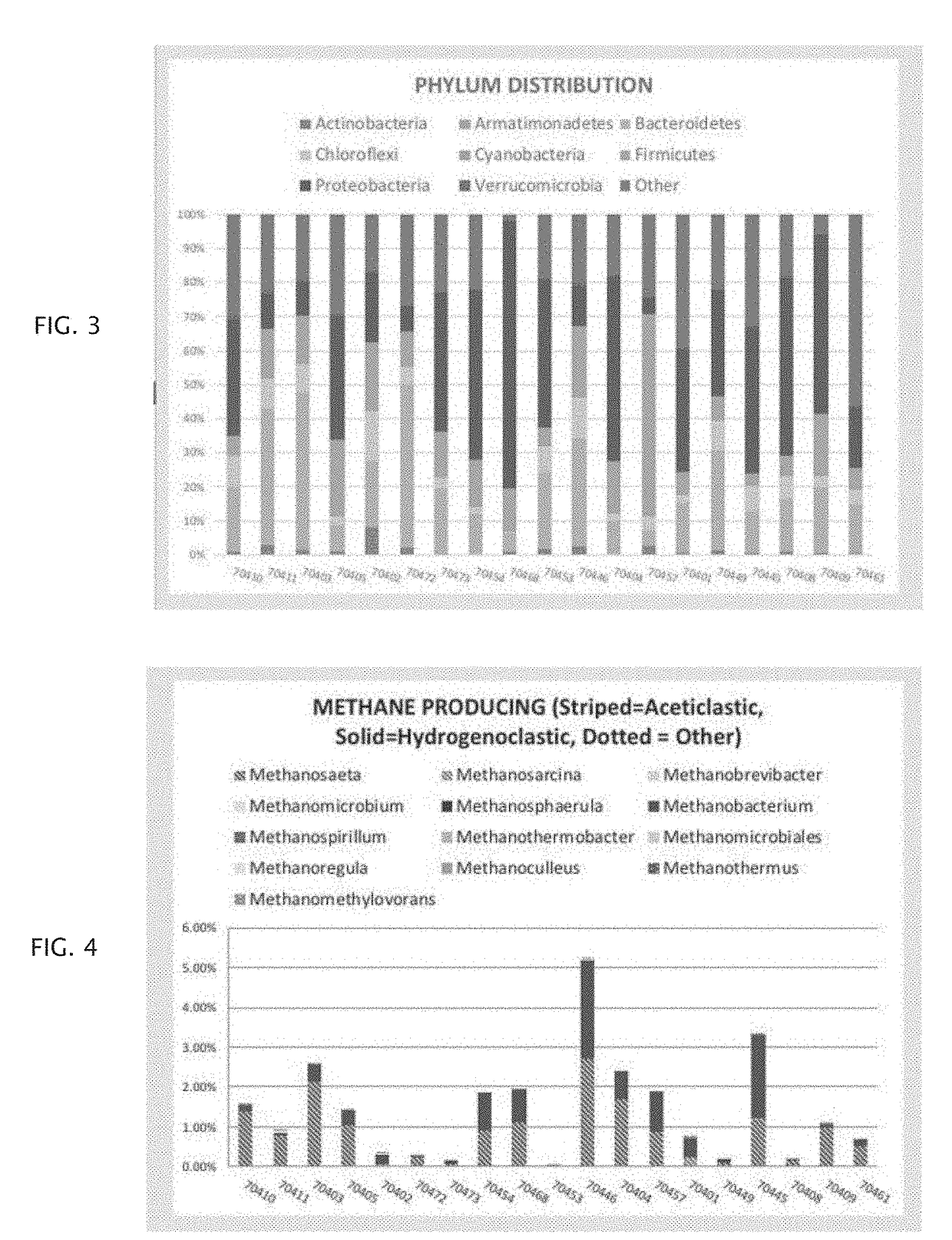Method of using microbial DNA sequencing in recovering renewable resources from wastewater and other waste streams
a technology of renewable resources and dna sequencing, which is applied in the field of using microbial dna sequencing to recover renewable resources from wastewater and other waste streams, can solve the problems of increasing the cost of a gas production bioreactor, affecting the production of gas, and affecting the quality of the gas produced, so as to reduce the cost facilitate the generation of energy, and reduce the effect of its own energy consumption costs
- Summary
- Abstract
- Description
- Claims
- Application Information
AI Technical Summary
Benefits of technology
Problems solved by technology
Method used
Image
Examples
Embodiment Construction
[0075]The following detailed description is of the best currently contemplated modes of carrying out exemplary embodiments of the invention. The description is not to be taken in a limiting sense, but is made merely for the purpose of illustrating the general principles of the invention, since the scope of the invention is best defined by the appended claims.
[0076]Broadly, one embodiment of the present invention provides a method of identifying, isolating, enriching and cultivating beneficial wastewater treatment microbes comprising the steps of:
[0077]collecting water samples from at least one location in a wastewater treatment system or large-scale wastewater treatment system;
[0078]filtering the water samples;
[0079]extracting DNA of microbes from the filters;
[0080]sequencing the DNA; and
[0081]identifying the microbes comprising the DNA detected.
[0082]One embodiment of the present invention is able to identify microbes in the sample that are actually able to consume the unique compo...
PUM
| Property | Measurement | Unit |
|---|---|---|
| temperature | aaaaa | aaaaa |
| time | aaaaa | aaaaa |
| pH | aaaaa | aaaaa |
Abstract
Description
Claims
Application Information
 Login to View More
Login to View More - R&D
- Intellectual Property
- Life Sciences
- Materials
- Tech Scout
- Unparalleled Data Quality
- Higher Quality Content
- 60% Fewer Hallucinations
Browse by: Latest US Patents, China's latest patents, Technical Efficacy Thesaurus, Application Domain, Technology Topic, Popular Technical Reports.
© 2025 PatSnap. All rights reserved.Legal|Privacy policy|Modern Slavery Act Transparency Statement|Sitemap|About US| Contact US: help@patsnap.com



